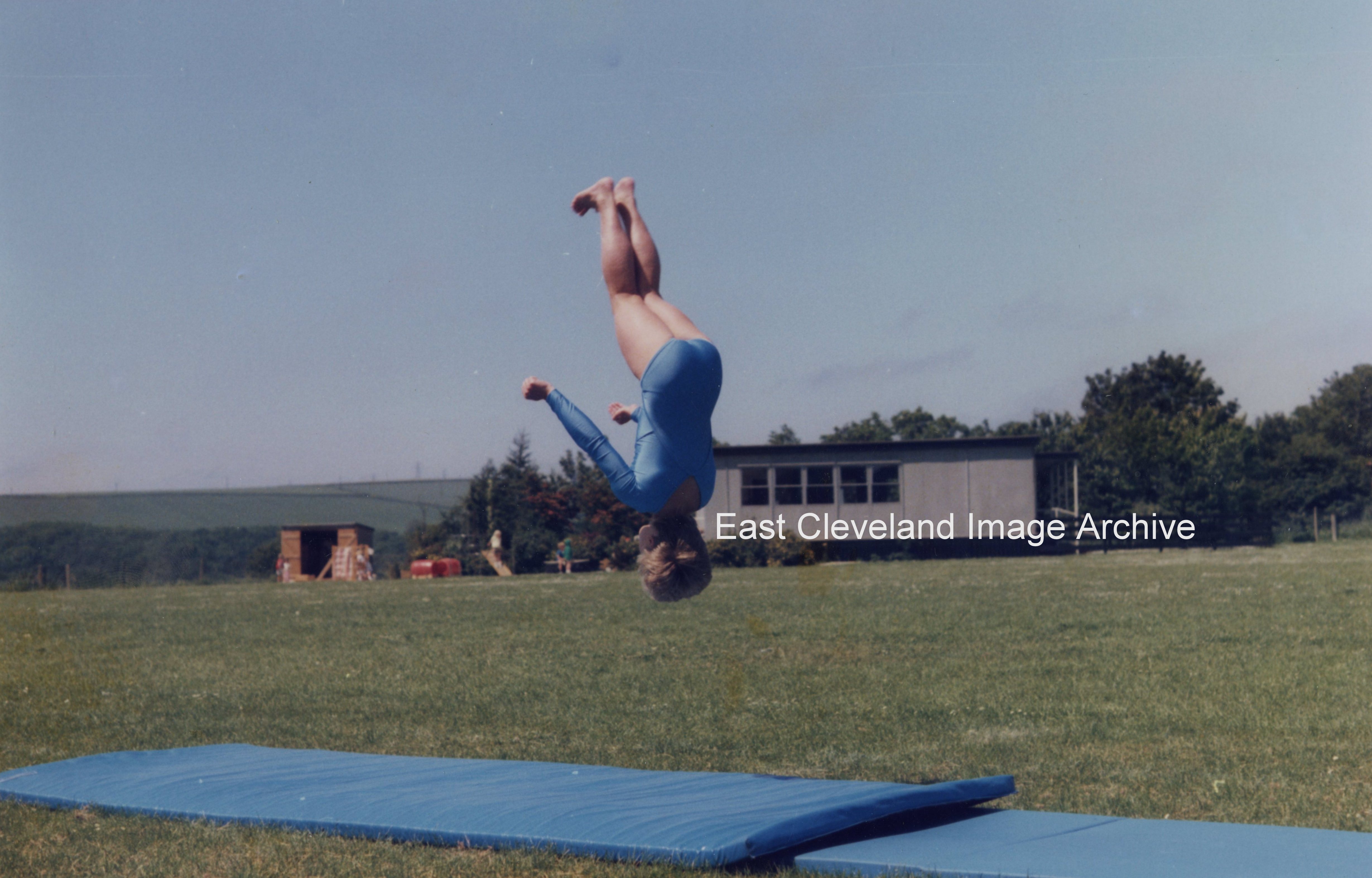
Rachel Dale has identified herself as this ”suspended” gymnast. Thanks to Rachel for being so brave.
Image courtesy of Mr D. McKenna and thanks to Rachel Dale for the update.
|
|
||
 Rachel Dale has identified herself as this ”suspended” gymnast. Thanks to Rachel for being so brave. Image courtesy of Mr D. McKenna and thanks to Rachel Dale for the update.  The May Queen Festival mid 1980’s. Helen Neasham, Louise Wilson, Claire Bailey, Linzi Hodgeson (May Queen), Sarah Cross, Rachel Dale, Lisa Byrne. Image and names courtesy of Mr D. McKenna. 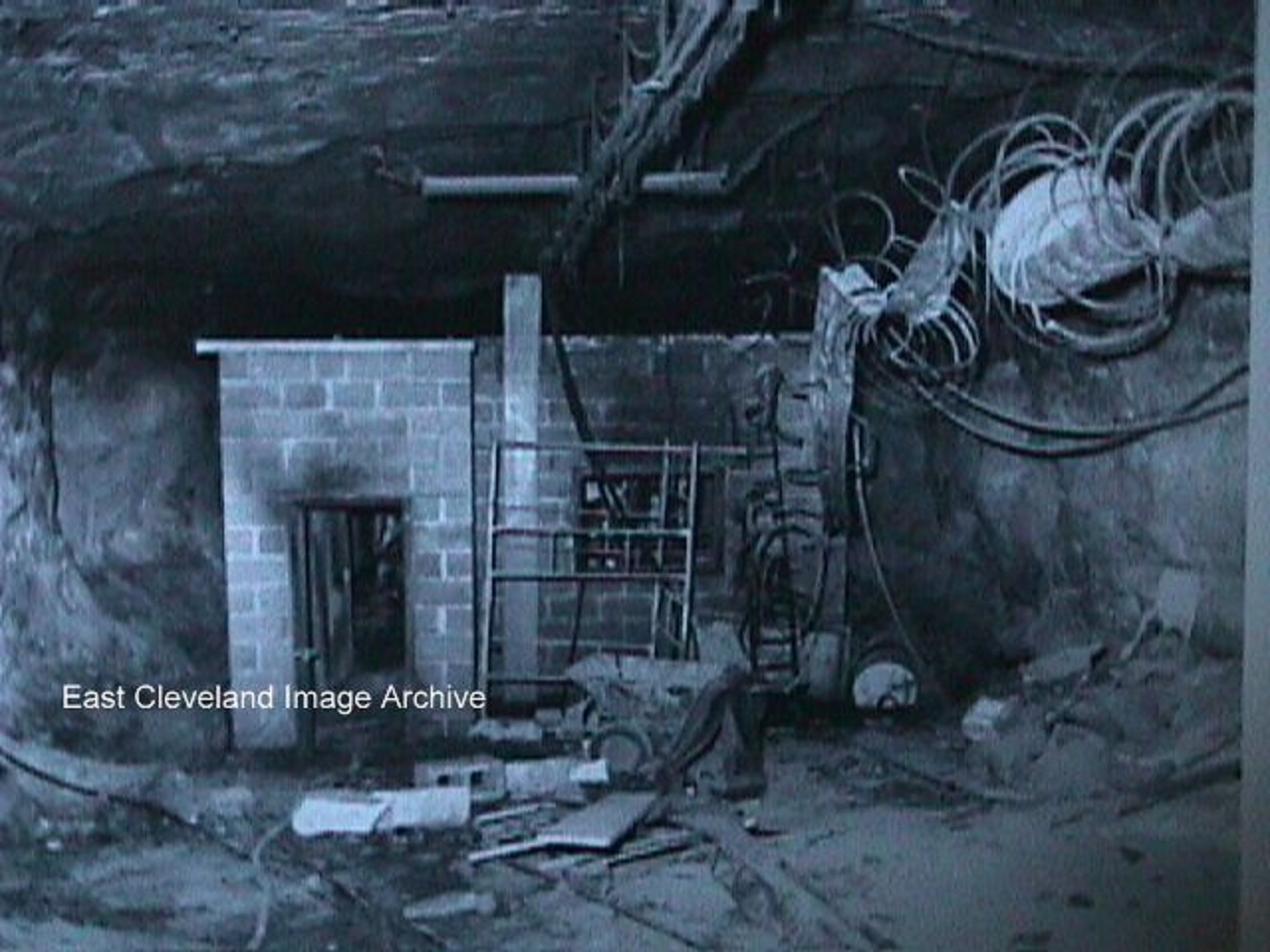 It doesn’t always go smoothly underground – I can imagine this caused considerable hazard underground, loads of toxic fumes, smoke and, worst of all, a lack of oxygen. Ian Benson recalls: “Remember having to go to site of fire with another miner to collect all the discharged fire extinguishers that the rescue team had used to put fire out and take to man shaft pit bottom to be sent out of mine for refilling. They must have used practically all the extinguishers down the mine. The fire I recall was around 1976. The photograph is just as I remember the scene”. Image courtesy of Alan M Franks and thanks to Ian Benson for that update. 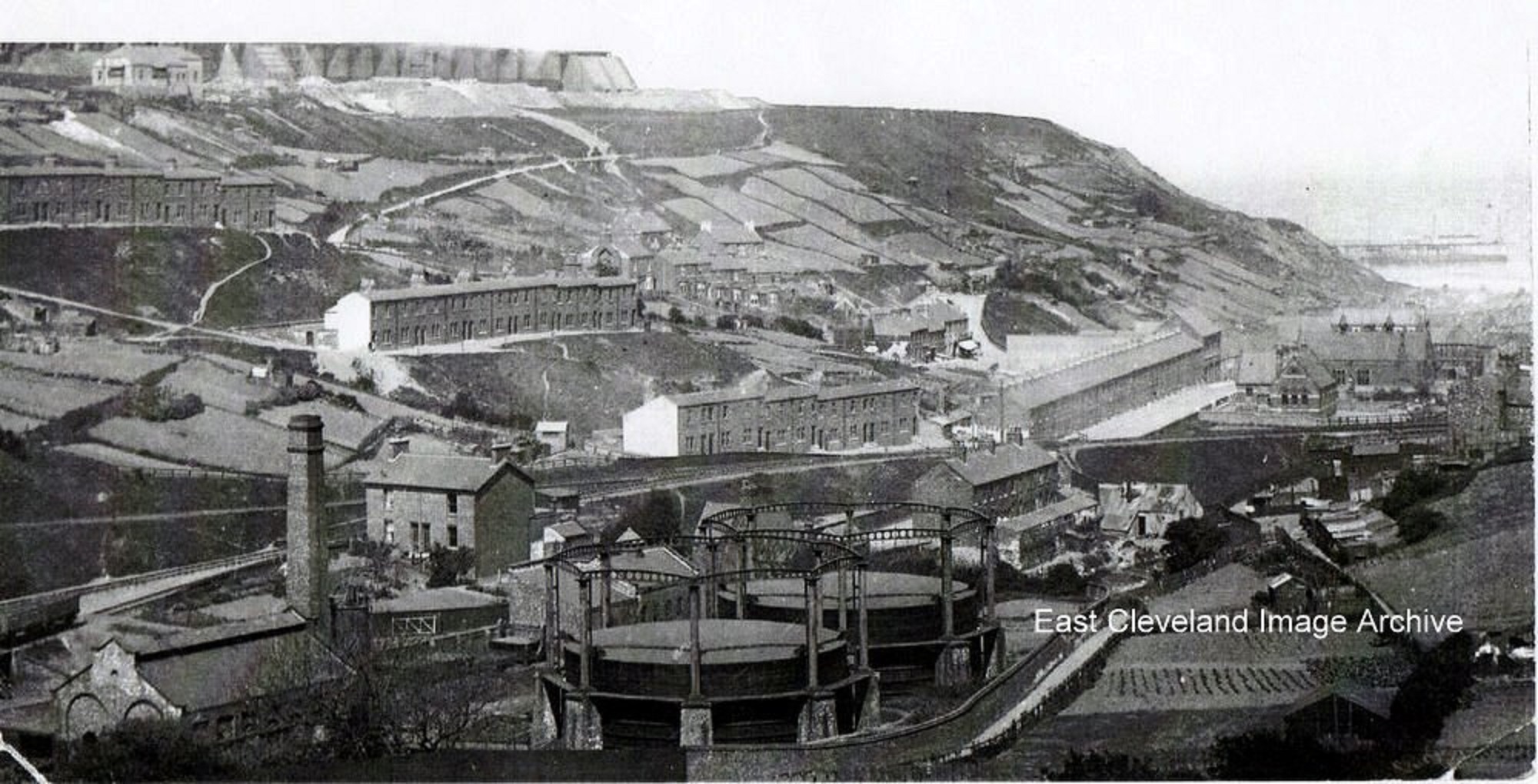 A view of Skinningrove looking over the gasometers, down the village, towards the sea. The terraces on Primrose Hill show up clearly; as do the neat fields or allotments above Grove Road. Image courtesy of the Pem Holliday Collection. 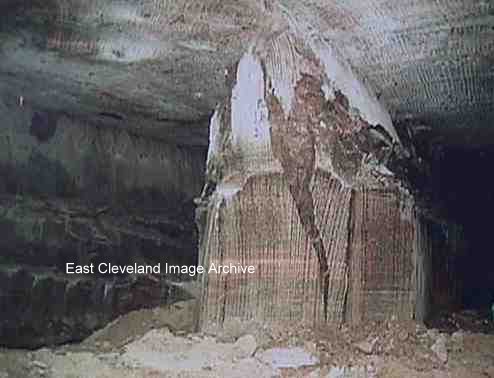 An example of the immense working pressures involved in potash mining and the instability of the crystal structures involved. Originally our Editor thought this pillar was part of the old Bord and Pillar workings, however Tim Coleman advised the Archive: “This pillar was located in the far south of the mine in a panel mined late 2001 and completed early 2002. The photograph has been clipped on the right hand side where my colleagues were standing”. Image courtesy of Alan M. Franks and information kindly supplied by Tim Coleman. He actually took this image when he was the Rock Mechanics Engineer at Boulby. 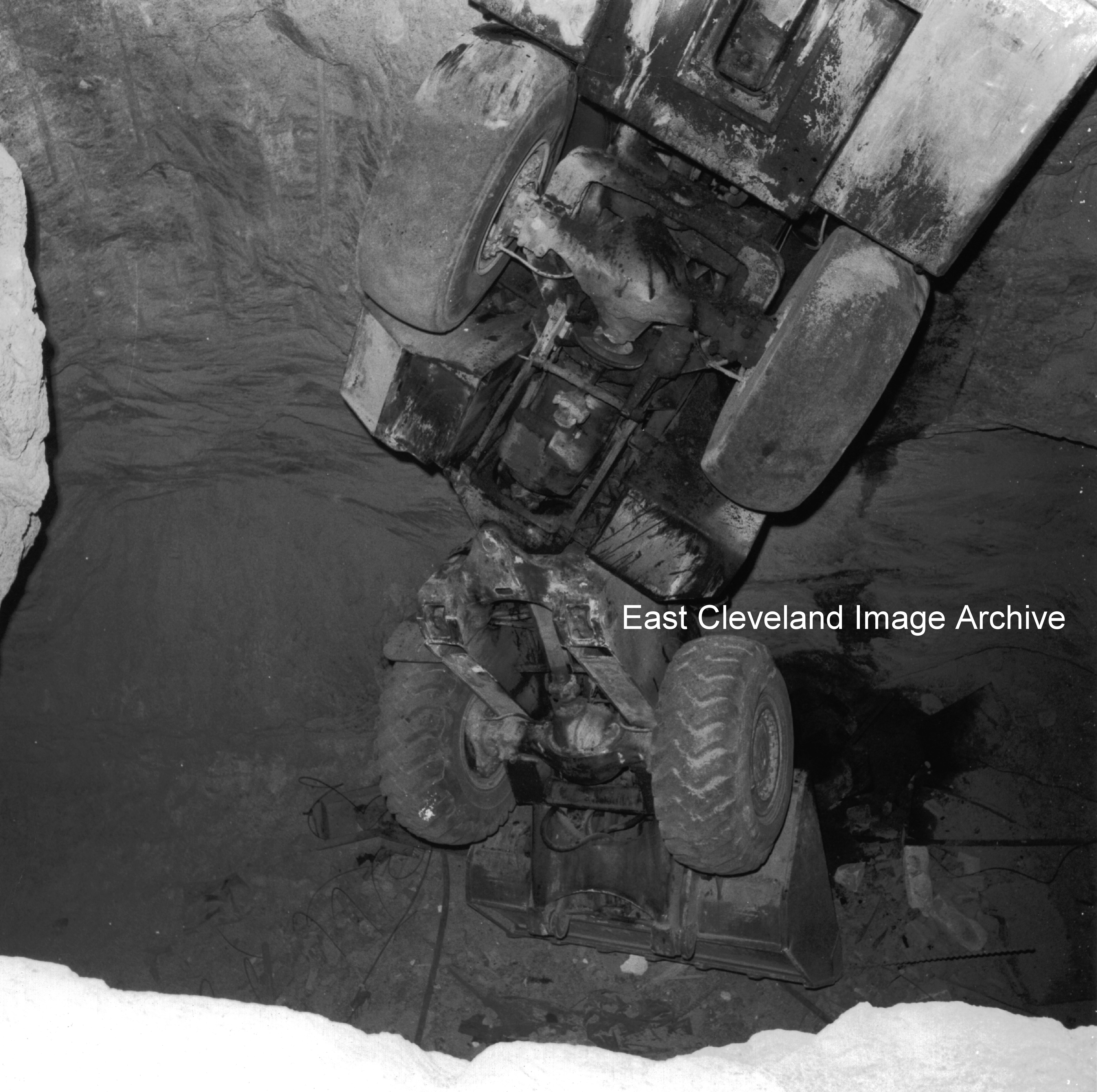 An accident at Boulby Potash, the vehicle has gone from one level to another the short way! Terry Robinson tells us: ”Looks like an Eimco 915 LHD (load haul dump) machine.” Ian Benson tells us: ”I can remember coming on the next shift from this accident happening. This Eimco was dropping potash ore down the recently mined hole for a rock crusher to be installed in the North Conveyor Road another Eimco was loading the ore at bottom and taking it to the north side stamler which feed it onto the north conveyor. I think the driver suffered minor injuries and recall that amazingly the Eimco only had minor damage and was soon back in service. This photograph dates from around 1976.” Image courtesy of Alan Franks and thanks to Terry Robinson and Ian Benson for the updates. 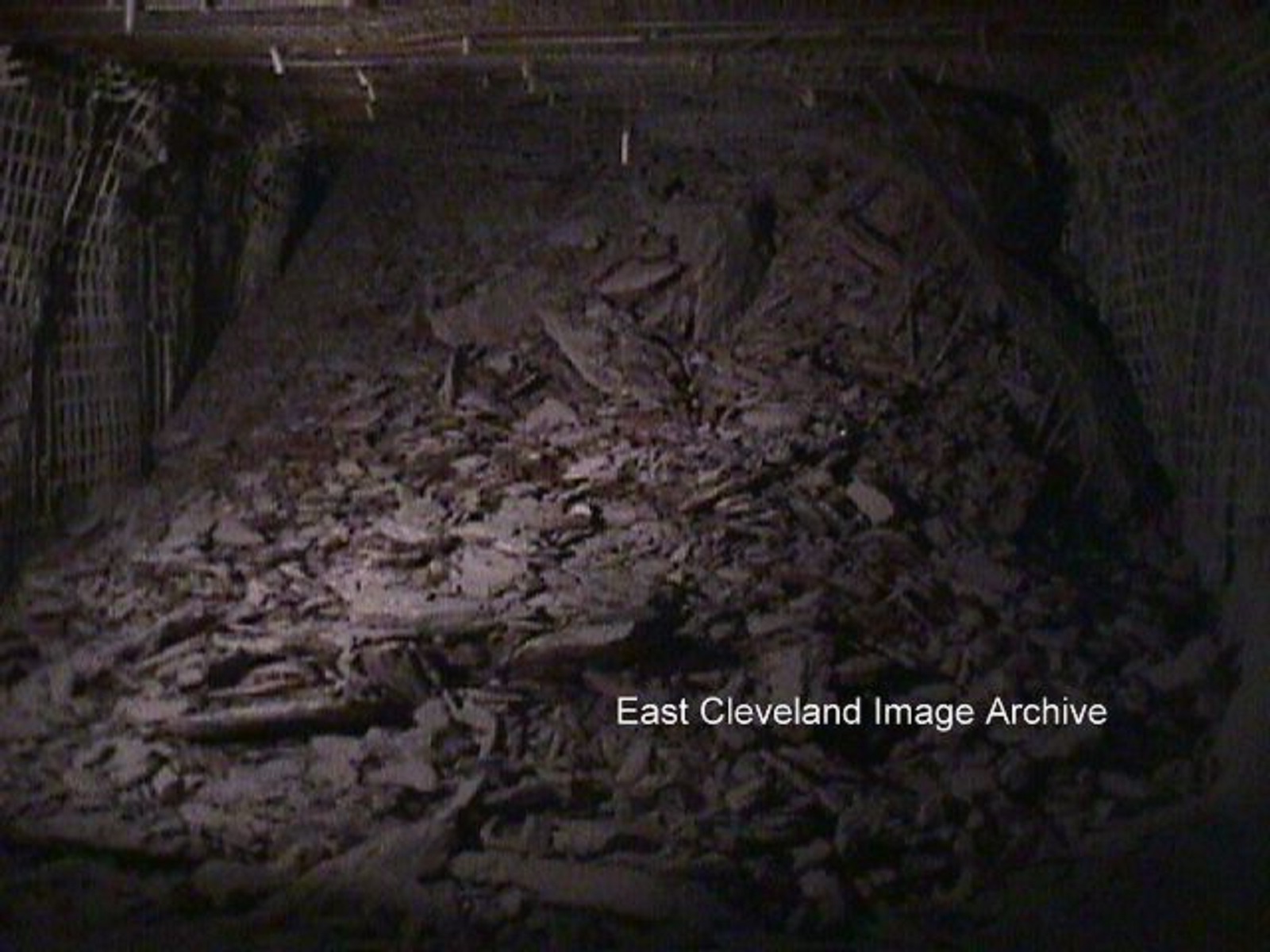 Just to show that even modern mining isn’t without its hazards, here’s an image of a roof fall caused by the somewhat unstable (in air) compound Carnalite. A web definition: Carnalite (KMgCl3·6H2O, hydrous magnesium and potassium chloride). Carnalite crystallizes in a rhombic system and has a hardness of 2.5, the same as the finger nail. It usually displays a granular structure. Carnalite can be colourless, pinkish or reddish, always with a vitreous gloss. Carnalite is deliquescent, it dissolves even in the air humidity. Its taste is salty, spicy after the potassium and bitter after the magnesium content. Ian Benson tells us: ”Cleveland Potash did look at the possibility of mining Carnalite but decided it would prove to difficult and hazardous.” The image is an obvious example of this problem. 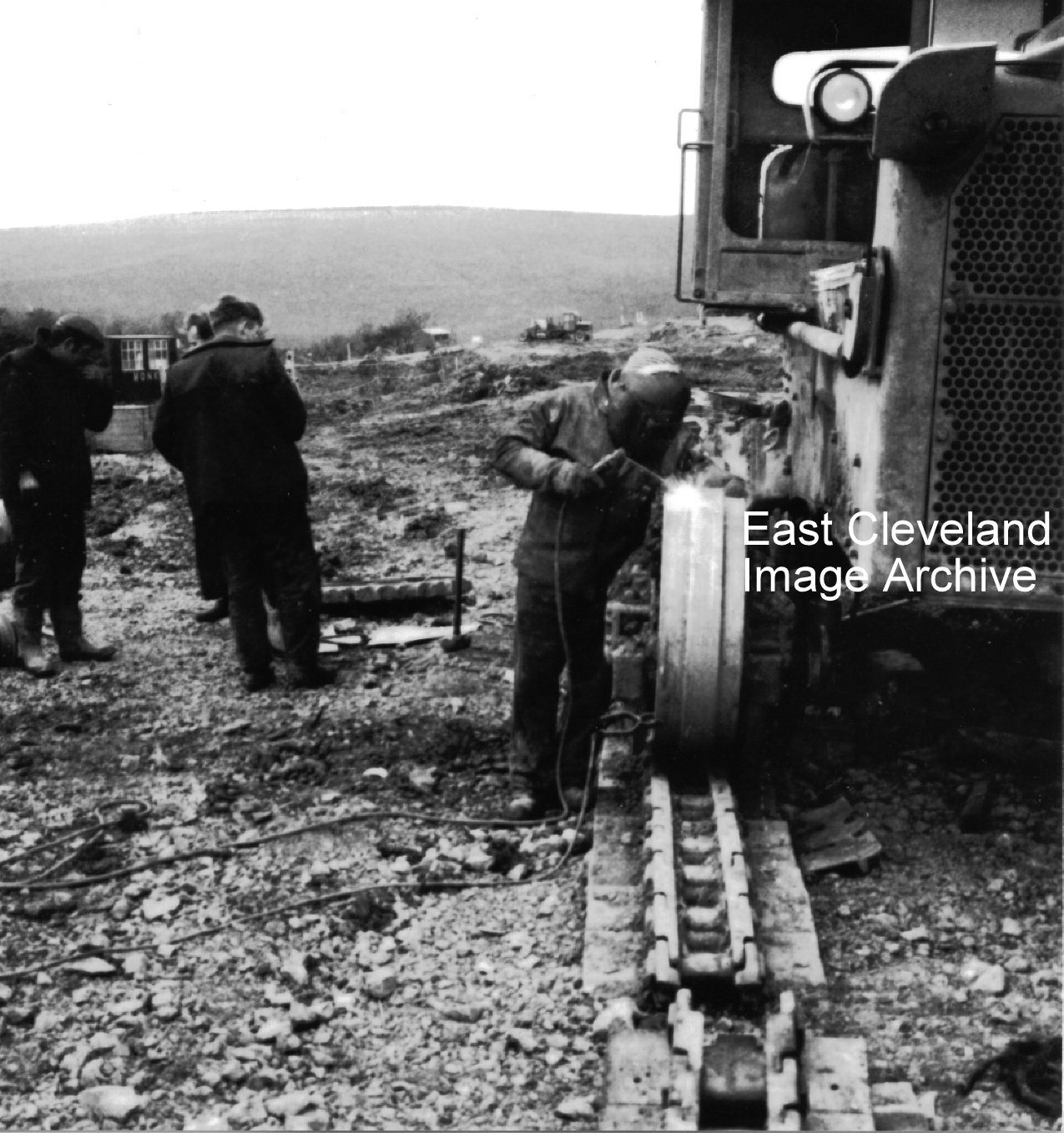 Sometimes it just isn’t your day! Running repairs on a big Cat! Image courtesy of Alan M. Franks. 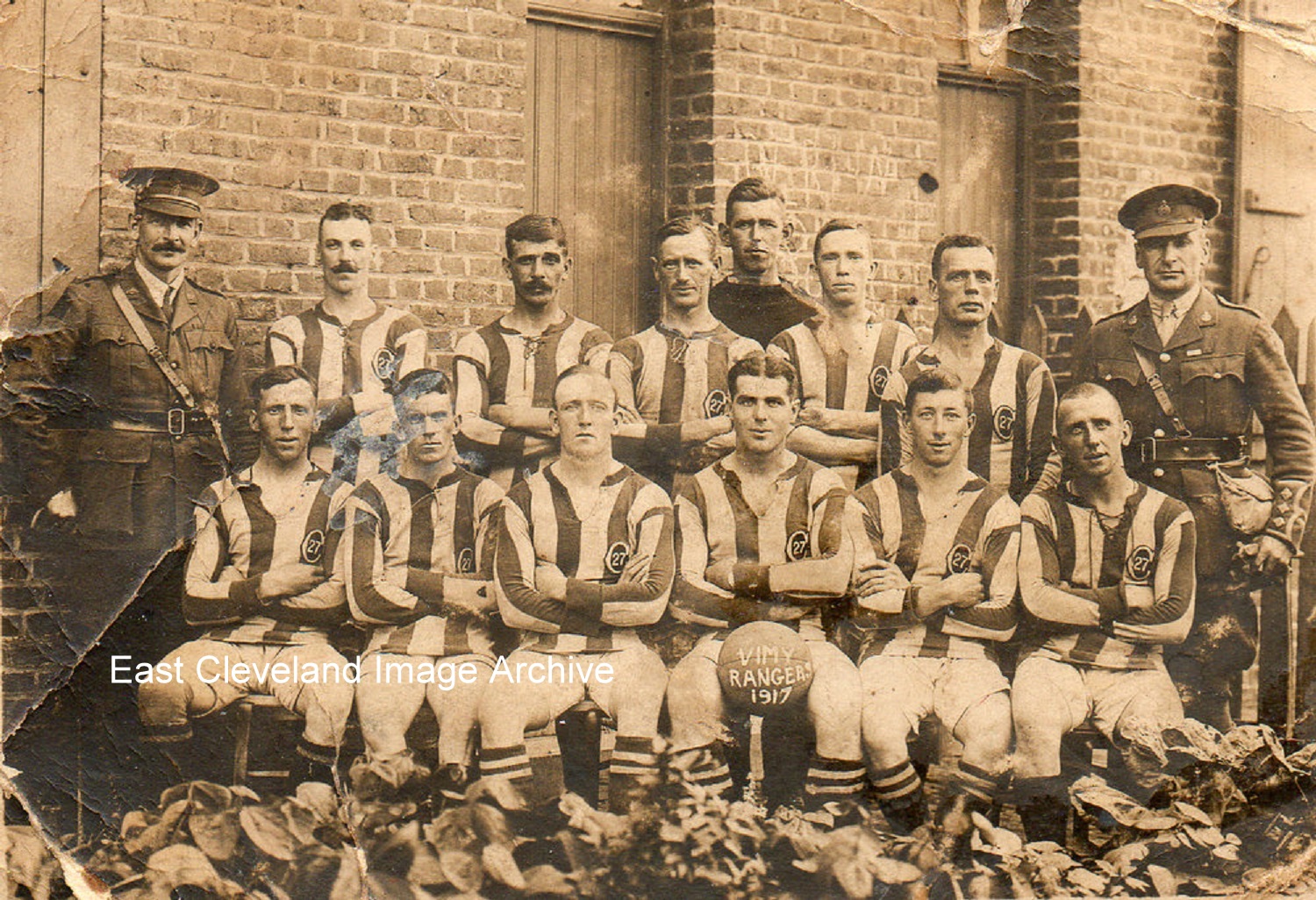 Okay the title is as much as the Archive knew about this photograph, who were they and where were they from? We awaited answers; pretty sure someone out there would be able to tell more about them. This is a very interesting photograph from the First World War. We need to identify the cap badges and the local lads. In 1917 the Allies launched an attack on the German lines at Arras in April. Nearly all offensives in the First War began in the Spring. More lives were lost on average per day at Arras than on the Somme in July 1916. The high ground to the north of Arras was called and still is as far as I know the VIMY ridge. It was high ground and had been held by the Germans probably since they retired after the Battle of the Marne in 1914. It was taken by the Canadians at great loss of life in 1917 and some small advance made. In fact the whole thing was a mock attack, invented by General Haig in the safe Chateau behind the lines. He had the track where he rode his horse sanded for safety. It was intended to keep the Germans diverted while General Neville attacked the Chemins des Dames, the high ground between Reims and Soissons. This was a failure and resulted in so many French dead that the French Army mutinied. Haig went on to what had been his main objective in July/August an advance at Ypres, which resulted in the horrors of Passchendaele”. Whilst Julie Riddiough added: ” There’s a Vimy barracks at Catterick Garrison if that helps at all?”. Peter Appleton has assisted with: “All I can extract, with certainty, from this image is that both officers are Captains. The 3 pips and 2 stripes on the cuff of the right-hand individual, and the 3 pips on the shoulders of the left-hand individual tell us that. The individual at the left has collar badges that are different in design to his cap badge which, unfortunately, is partly obscured by his cap strap. This wearing of two, different, badges indicates that he has a specialism, as depicted on his collar badge, but is attached to a different unit, as depicted by his cap badge. The individual at the right has collar badges that could be smaller versions of his cap badge. This cap badge is of the fairly common design: a laurel wreath, surmounted by a crown, with a central element, and without a scroll across the bottom. There are many such designs used by regiments during WW1. I cannot be sure, but one such design, which matches closely with what can be made out when enlarging the image, would be The Rifle Brigade”. Image courtesy of Joan Jemson and thanks to Bill Danby, Julie Riddiough and Peter Appleton for the updates. 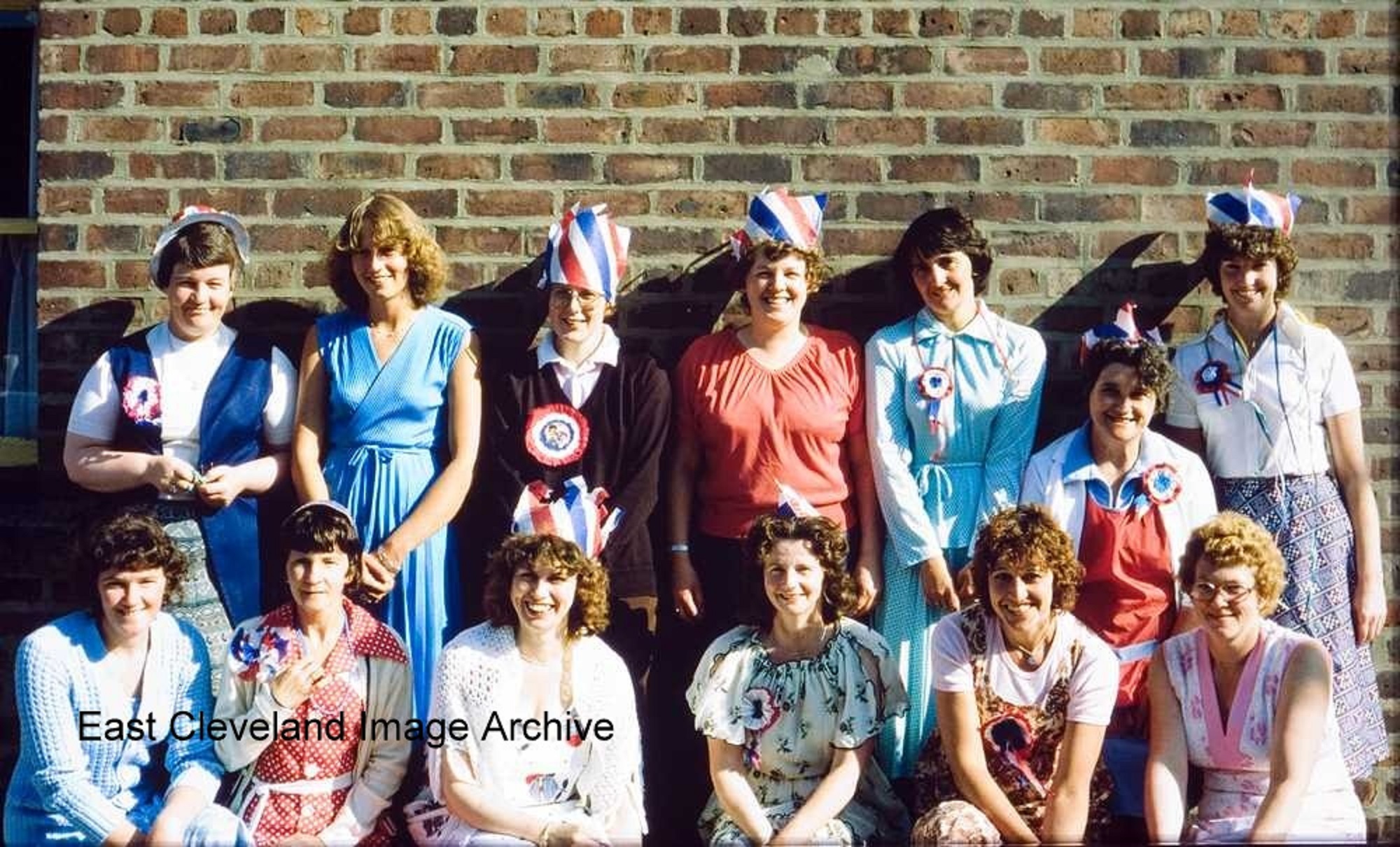 These are the ladies who made all the arrangements for the street party for Queen Street, Grosvenor Terrace and Irene Street in Carlin How; to celebrate the Marriage of Charles and Diane on the 29th July 1981 and a grand job they did too. Duncan Sellers tells us: ”I lived on Grosvenor Terrace at this time, but I can’t remember this street party, although I do remember the one that was organised for the Silver Jubilee in 1977, held up at the Football Field. Many familiar names and faces, but none of them seen in over 30 years!” Image courtesy of Raymond Brown, thanks to Antony, Mark Simmonds, Duncan Sellers and Sharon Bell for the updates. |
||
Recent Comments